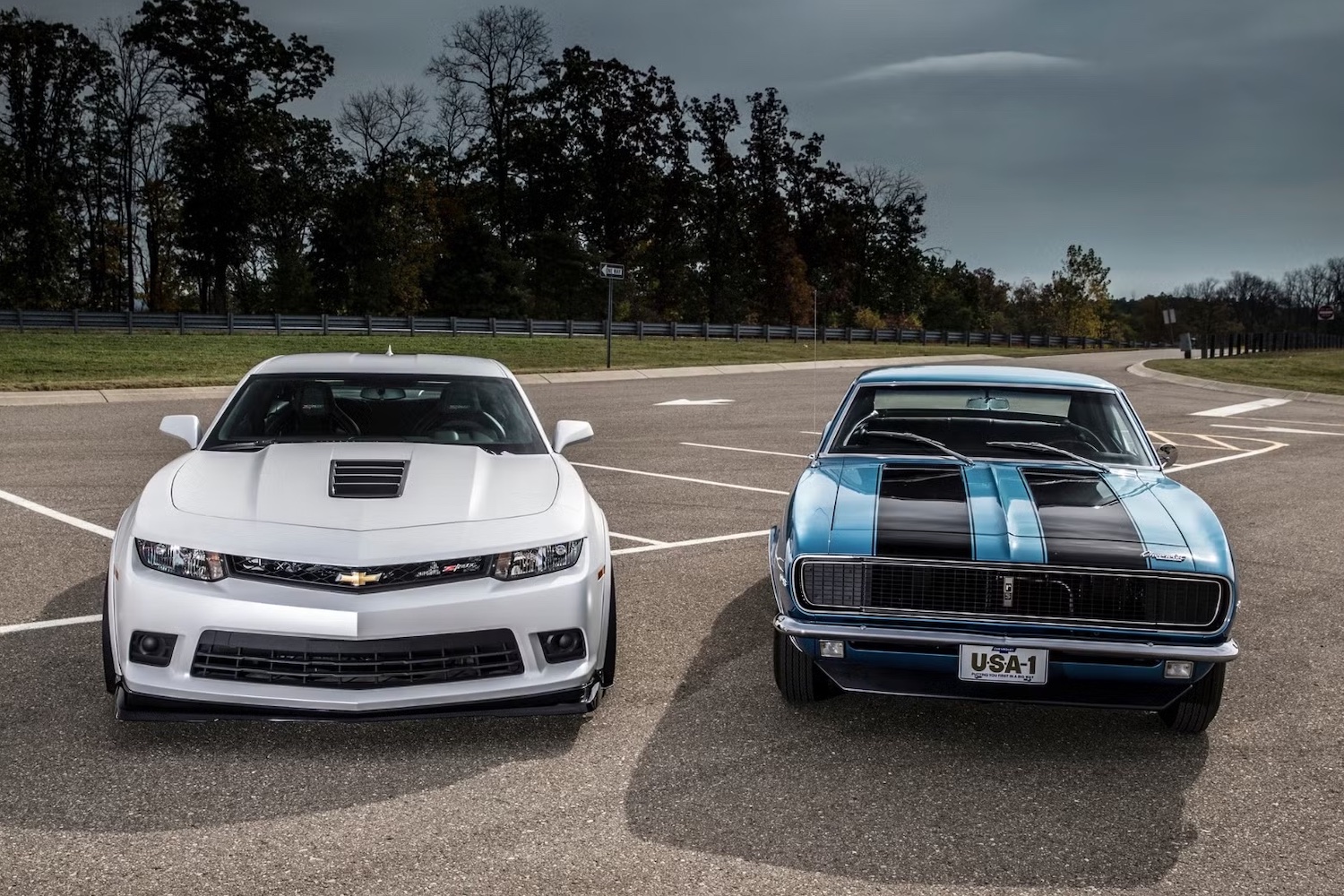A Brief History of the Chevrolet Camaro

Throughout the history of the Chevrolet company, many excellent cars have been produced. Among them, the Camaro stands out, which for decades was considered the standard pony car and was a serious competitor to other legendary models of this type. It was constantly being improved and adapted to customers’ current needs, which caused all generations of Camaro to become popular in different countries. This article will present a brief history of the famous Chevrolet model. It will help better understand the key stages of the car’s development and appreciate its uniqueness.
1965-1969
The first official information about the Chevrolet Camaro appeared a year before its production started. This happened in 1965 and became a landmark event for the entire automotive community. In the fall of 1966, the pony car was presented in Detroit and Los Angeles, and a few days later, it became available for purchase as a first-generation model. Today, this vehicle can only be found at online auctions, where junk classic cars are for sale, but back then, it was present in all Chevrolet dealerships.
The 1st generation Camaro was available only until 1969. At that time, different versions of V6 and V8 engines were produced, which made enormous power during that period and allowed the car to accelerate at high speeds. The 1967 version was already finalized in 1968. It underwent minor changes in appearance and interior design and received new headlights and improved shock absorbers. In 1969, Camaro fans were given a new grille (V-shaped).
1970-1992
In the early 70s, Chevrolet introduced the Camaro II generation. This model became one of the most successful, as it existed for 11 years. The updated version was adapted to the new safety requirements adopted at that time, which allowed it to retain, in comparison with its predecessor, only recognizable design elements. The changes affected many components of the Camaro. So, the new product of the 70s received front bumpers, a less powerful power plant, power windows, and air conditioning. It also became less environmentally harmful and became a more controllable pony car.
In 1982, the world saw the Camaro III generation. This car received a more streamlined shape, a unique front suspension and a 5-liter V8 engine. The latter produced 165 hp, allowing the pony car to accelerate to 100 km/h in 10.1 s. The maximum speed was 195 km/h. As the model was improved, this engine’s power figure was constantly increasing, and by 1992, it reached 245 hp. After that, the third-generation Camaro was discontinued and replaced by a more modern version of the legendary car.
1993-2015
In 1993, Chevrolet released the fourth-generation Camaro. In the early years of its existence, this model was equipped with a V6 engine with a volume of 3.4 liters and produced 160 hp. After minor modifications in subsequent years, the Camaro began to be fitted with a 3.8-liter V6 and a 5.7-liter V8. The latter had a power of 275-325 hp, a record for the Chevrolet model range. Among other characteristic features of the fourth-generation model, a modified and lowered front end closer to the road, modern headlights, and many modification options stood out.
In 2002, the fourth-generation Camaro was discontinued, and until 2010, Chevrolet had not released new versions of this pony car. Only in 2010 did the fifth-generation model appear. It had a classic appearance, similar to cars of the 70s and 80s. At the same time, the newly released Camaro was equipped with advanced features, making it safer and easier to drive. Like many predecessors, the fifth-generation model had V6 and V8 engines. They had different volumes, power, and torque, so buyers had something to choose from. This Camaro was discontinued in 2015.
2016-present
The new and, so far, the final stage of the Chevrolet Camaro’s development began with the appearance of the sixth-generation model. It became available in 2016 and worthyly replaced its predecessor. This car received a powerful V8, producing 455-650 hp and allowing it to reach an unrealistic 319 km/h. A 10-speed AT or 6-speed MT works in tandem with this engine. In 2019, Chevrolet designers considerably changed the Camaro’s design, making it more modern and stylish. This year’s version also got signature LED headlights.
Updated versions of the sixth-generation Camaro were also presented in 2020 and 2021. They received a new exhaust system and more advanced brake discs. The models were also equipped with a modern turbocharged V8. In 2022, Chevrolet expanded the number of available engine options. Its new models brought some variety and allowed fans of the famous model to choose one independently. In 2024, the sixth-generation Camaro was discontinued. Chevrolet has not yet disclosed its plans for further development. However, representatives of the American brand confidently state that the history of the Camaro will soon be continued.
The Chevrolet Camaro is a legendary car that appeared in the 1960s of the last century. It immediately became popular among pony car lovers and became their constant companion. Over the decades, this model has improved, changed its appearance and become more modern, but it has always retained its uniqueness. Today, the legendary Camaro remains in demand among lovers of American classics, and there is hope that this will continue for many years.
